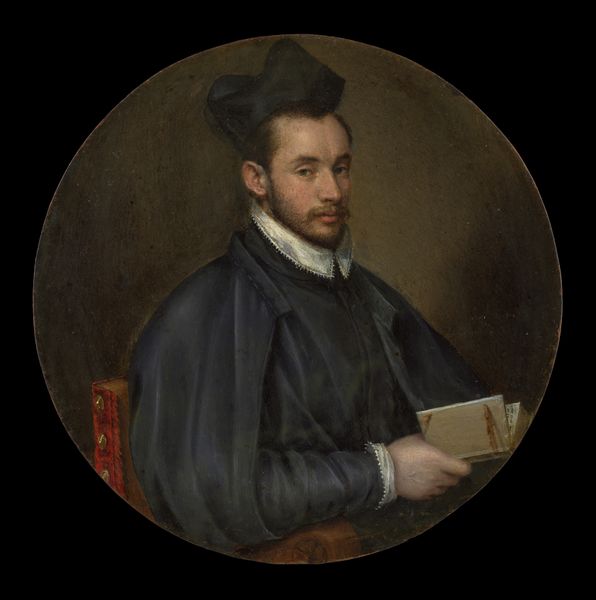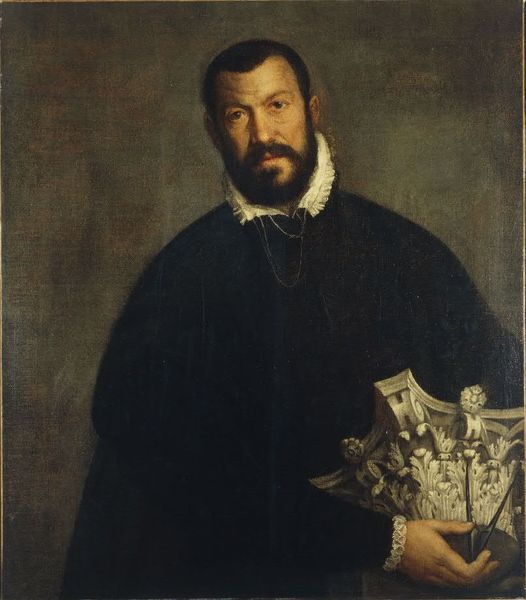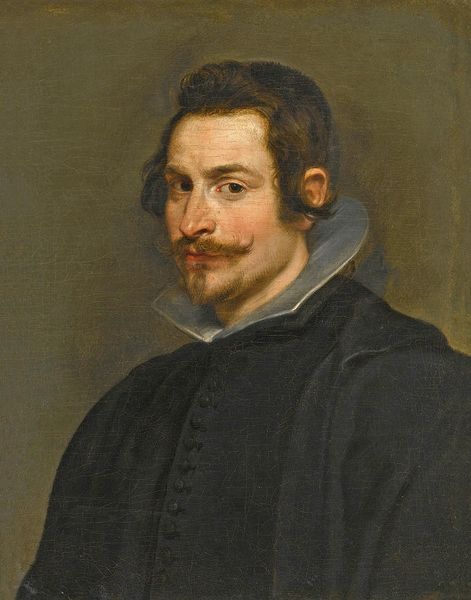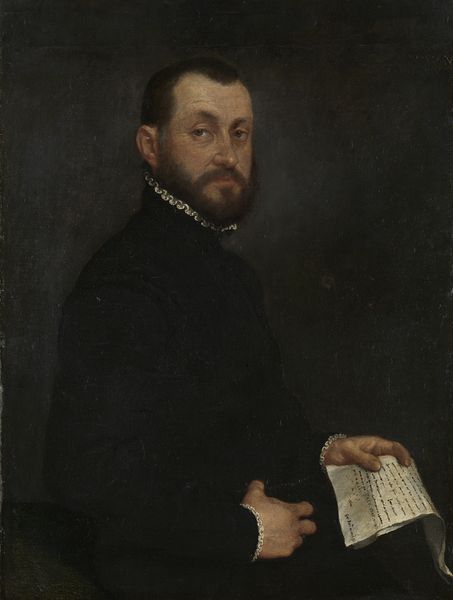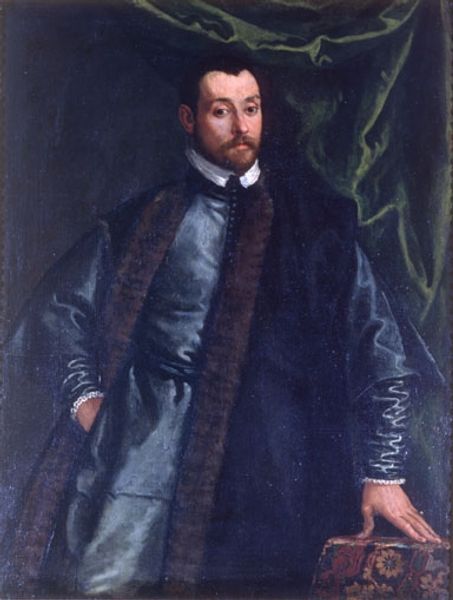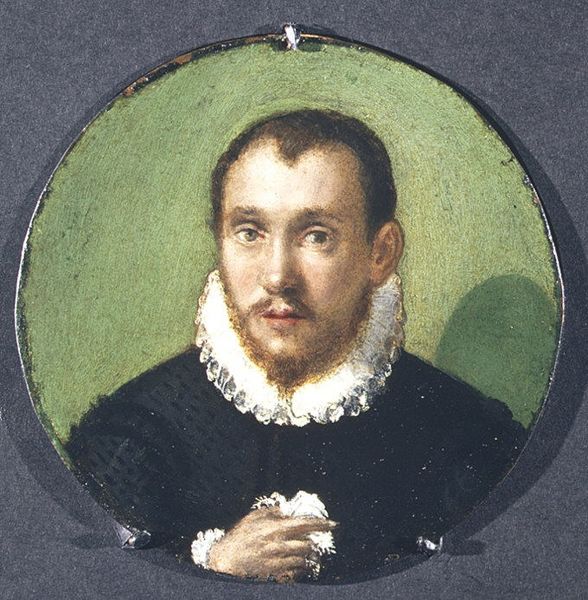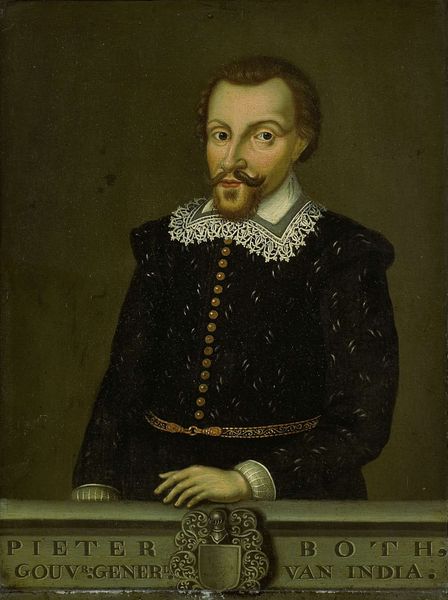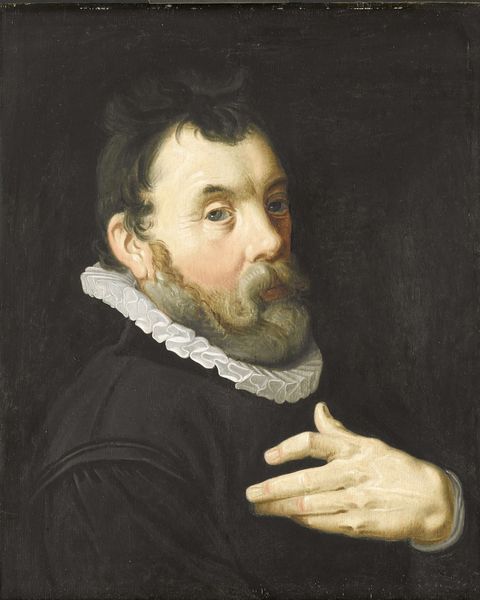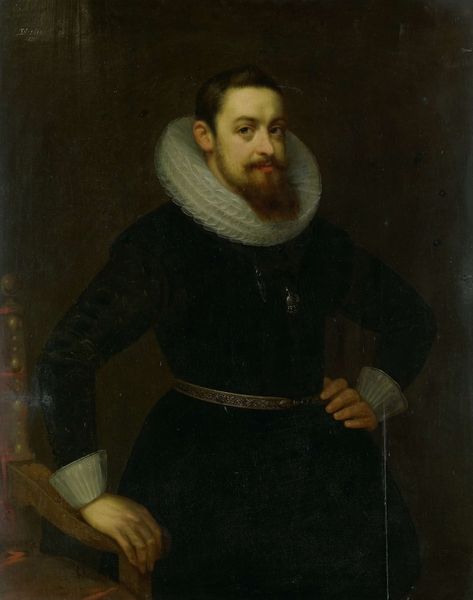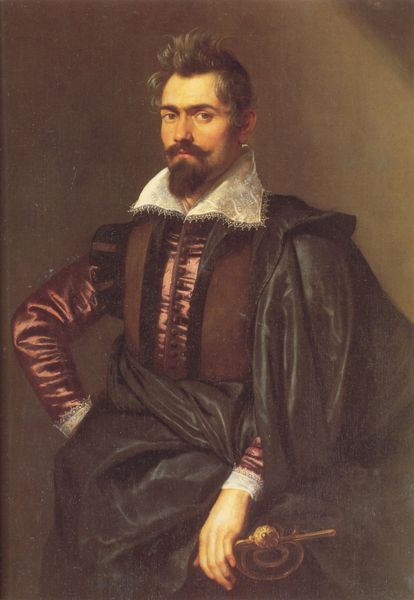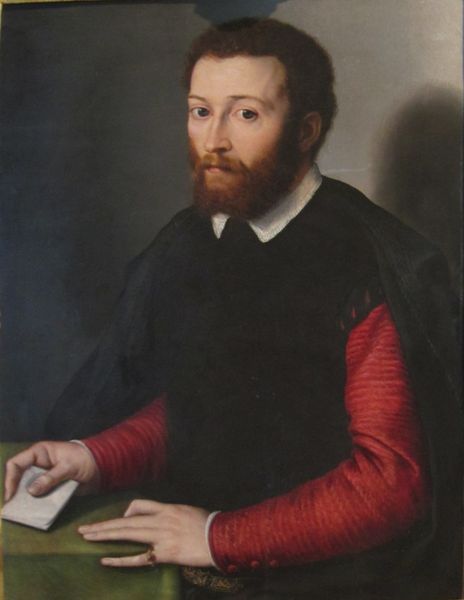
painting, oil-paint
#
portrait
#
self-portrait
#
portrait
#
painting
#
oil-paint
#
mannerism
#
history-painting
Copyright: Public domain
Editor: Here we have Francesco Salviati’s "Portrait of a Young Man" from around 1550, oil on panel. There's something reserved, even melancholic, about the figure. What catches your eye in this painting? Curator: The interesting element here, for me, isn't the sitters psychology, but the construction of status through materiality. Oil paint allows for meticulous depiction of textures and details. Consider the crisp linen of his collar and the quality of his dark doublet. How do these materials contribute to the subject’s position and identity? Editor: So, you're less interested in *who* he is and more in *what* he’s wearing, or rather, what his clothes are saying about him? Curator: Precisely. In Mannerist portraiture, the material is central. Labor-intensive garments signified wealth and taste. The fine lace, the tailoring, each reflects economic power and participation in a specific culture. Note the lack of ostentatious jewelry, this shows instead an investment into expertly worked clothing, made for him alone. This shift signifies increasing mercantilist trade which created new opportunities for displaying ones identity through consumption, a true departure. What processes do you imagine went into creating just that collar? Editor: Thinking about it that way really opens up the picture. The painting then becomes an advertisement of skill in clothing manufacturing and an access to new materials... Thank you! Curator: Of course. And by extension, this artwork, via its medium, material properties and through its subject, hints at changing economies during the 16th century. Food for thought.
Comments
No comments
Be the first to comment and join the conversation on the ultimate creative platform.

